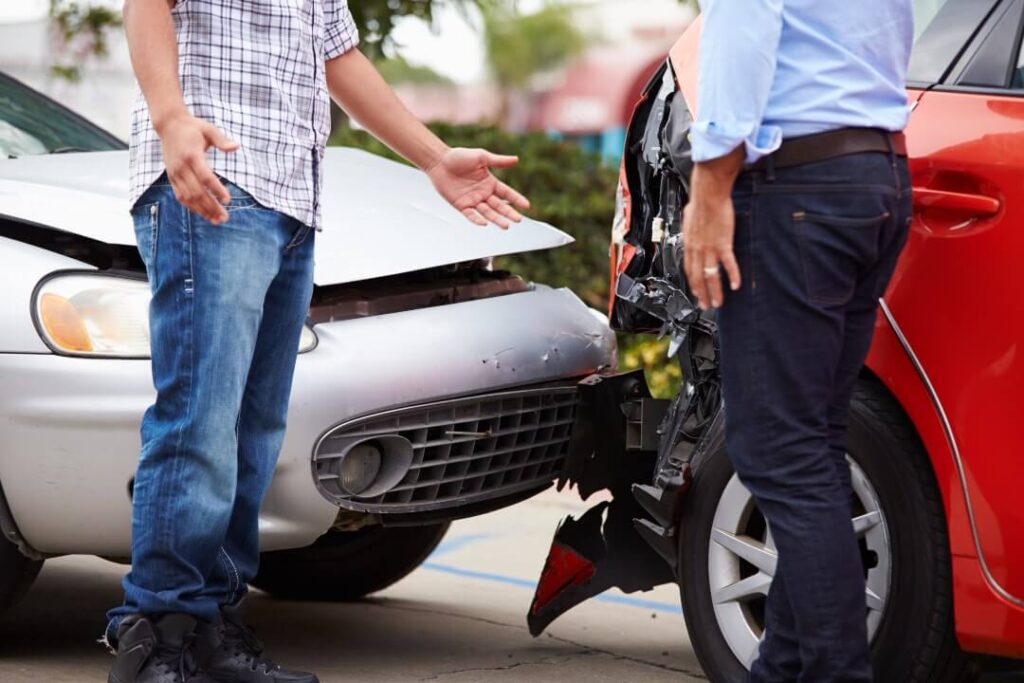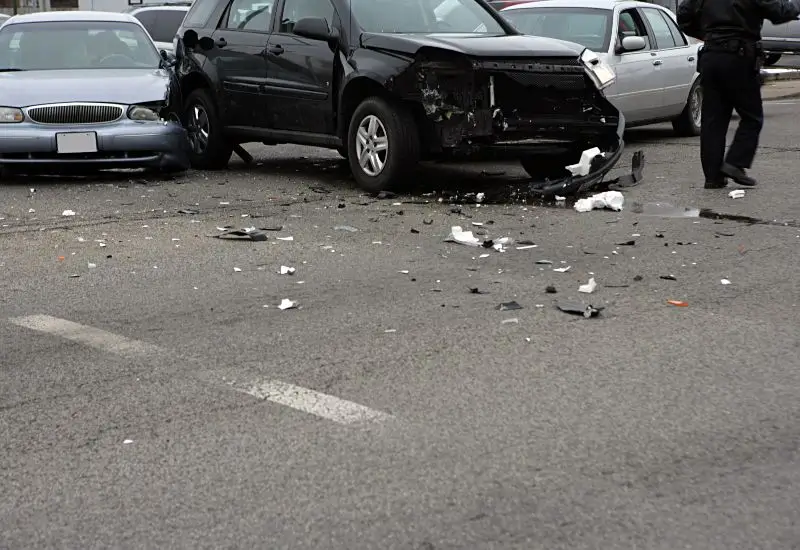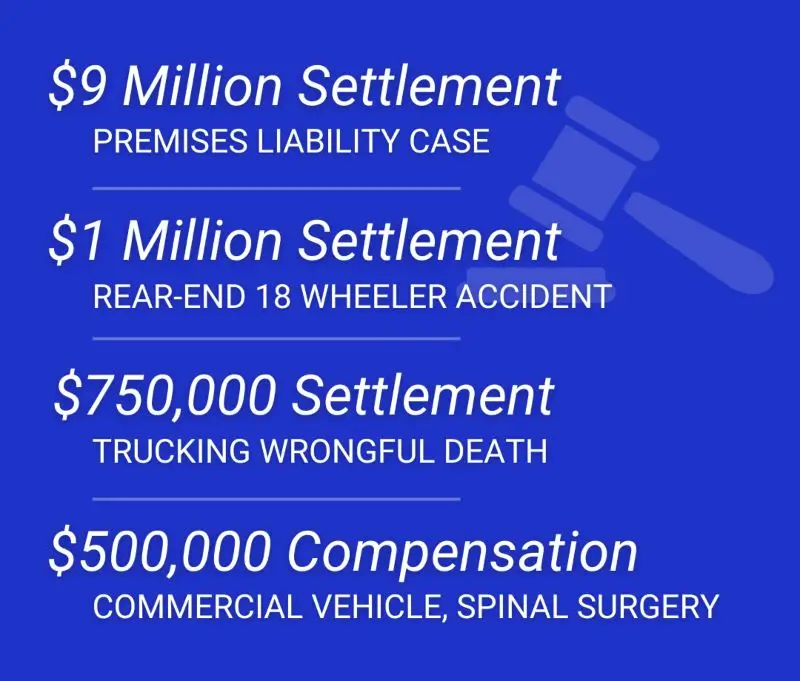Need help navigating the complexities of modified comparative fault rules? At Nava Law Group, our expert attorneys can help you understand the intricacies of modified comparative fault rules in Texas. Personal injury claims are handled differently in every state and can become even more complex when more than one party is at fault in an accident. Texas and 31 other states use the modified comparative fault rule to determine compensation. This legal principle allows injured parties to recover damages as long as they aren’t more than 50% at fault for the incident. Understanding how comparative fault works is crucial for personal injury victims, as it directly impacts the amount of compensation they may receive. Below is a detailed breakdown of comparative fault and why it’s important to your case.

Texas’ Modified Comparative Fault Explained
Texas law recognizes that accidents often involve shared fault, meaning multiple parties may bear responsibility for what happened. The state follows a legal principle known as the “modified comparative negligence” system. Under this system, your ability to recover damages in a personal injury case depends on your level of fault compared to others involved in the accident. This approach ensures that liability is distributed fairly among all parties based on their contribution to the incident.
For example, if you’re involved in a car accident and found to be partially at fault, your compensation will be reduced by your percentage of fault. If you’re determined to be 40% responsible for the accident, you can only recover 60% of the damages awarded. This system emphasizes the importance of evidence, legal representation, and a fair assessment of each party’s role in an accident. Understanding how fault is evaluated can have massive implications on the outcome of your case, making it crucial to seek expert legal advice in personal injury claims.
Examples of Shared Fault
Accidents aren’t always straightforward when it comes to assigning fault. In many cases, multiple parties can share responsibility, with each contributing to the outcome in different ways. Consider these examples that demonstrate how blame can be divided in situations where actions from both sides play a role:
- A driver tailgates another vehicle closely, leaving little room to react. Suddenly, the vehicle in front unexpectedly turns without using its signal. Traditionally, the tailgater would be held responsible for the resulting collision due to following too closely. However, in this situation, the failure of the leading vehicle to signal properly becomes a contributing factor, complicating the determination of fault and highlighting the importance of maintaining a safe following distance and using turn signals effectively.
- A shopper, distracted by their phone while walking through a store, doesn’t notice a puddle of water on the floor and ends up slipping and falling. In this situation, if the store owner failed to place a visible warning sign or neglected to clean up the hazard promptly, they could be deemed negligent. However, since the shopper wasn’t paying attention to their surroundings, responsibility for the incident may be shared between both parties. This highlights the importance of both maintaining a safe environment and staying alert.
- A pedestrian steps into the street in an area where no crosswalk is present, attempting to cross quickly without checking for oncoming vehicles. At the same time, a car approaches at a speed well above the posted limit, giving the driver little time to react. The combination of the pedestrian’s sudden movement and the driver’s excessive speed leads to a collision, with both factors playing a crucial role in causing the accident. In this situation, both parties may share responsibility for the resulting injuries.
Implications of the 51% Rule
The 51% rule is a legal principle that determines how damages are awarded in accident cases. It stipulates that if a person is found to be more at fault for causing an accident than the other party — specifically, 51% or greater — they lose the right to collect any damages from the other party. This rule is designed to ensure fairness by holding individuals accountable for their level of responsibility in an incident. As a result, it underscores the importance of thoroughly investigating the accident, collecting witness statements, reviewing police reports, and gathering all relevant evidence to accurately determine fault percentages and ensure a just outcome for all parties involved.
What Happens if More Than Two People Are Involved in an Accident?
In situations where more than two parties are involved in an accident, the modified comparative fault rule still applies. Each party’s level of responsibility will be evaluated, and a percentage will be assigned based on their actions that contributed to the incident. For example, if three people are involved in a car accident and one is found to be 40% at fault, another 30%, and the third 30%, their damages will be reduced by their respective levels of fault. This approach ensures that each person is accountable for their role in the accident.
Negligence Claim Requirements in Texas
The plaintiff must meet specific legal requirements to establish a negligence claim. These elements are essential in proving that the defendant’s actions caused harm. Here’s a breakdown of the key components needed to demonstrate negligence:
- Duty of Care – Duty of care refers to the legal obligation of an individual to exercise a reasonable level of care to prevent harm to others. In legal terms, it means taking actions or precautions to avoid foreseeable risks that could injure someone.
- Breach – Breach of duty occurs when someone fails to fulfill their legal responsibility to act with reasonable care, either through negligent or reckless behavior, resulting in harm to another person.
- Causation – The plaintiff must demonstrate that the defendant’s actions were the direct cause of their injuries. This typically requires evidence that the injuries wouldn’t have occurred without the defendant’s specific actions or negligence.
- Damages – The plaintiff must also demonstrate that they suffered actual damages due to the incident, such as medical expenses, lost wages, and pain and suffering. Providing clear evidence of these damages is crucial to building a strong case.
The Role of Personal Injury Protection (PIP)
Texas drivers often include personal injury protection (PIP) in their auto insurance policies. This coverage option is designed to provide immediate financial relief for medical expenses and lost wages following an accident, regardless of who’s at fault. PIP can be an essential resource for covering urgent medical bills, rehabilitation costs, or essential services like childcare during recovery. However, while this coverage offers crucial immediate assistance, it doesn’t eliminate the importance of seeking compensation through a personal injury claim if another party’s negligence played a role in causing your injuries. Pursuing a claim can help ensure that you receive full and fair compensation for long-term damages, pain, and suffering beyond what PIP can cover.

Comparing Different Models of Fault
The modified comparative fault rule is just one of several legal approaches to determining shared responsibility in the United States. Each state has its own rules and guidelines for handling cases where both parties may be at fault. Here’s a quick overview of how each model works:
- Pure Comparative Fault – This system allows plaintiffs to recover damages even if they’re 99% at fault. However, the compensation will be reduced by their level of responsibility.
- Modified Comparative Fault – As explained above, this model allows plaintiffs to recover damages as long as they’re not more than 50% at fault. If they’re found to be equally or more at fault than the defendant, they’re barred from recovering any compensation.
- Contributory Negligence – Similar to the modified comparative fault rule, this system reduces damages based on the percentage of fault assigned to each party. However, it follows a strict 50% bar rule.
Methods of Proving Fault in an Accident
The burden of proof for proving fault in a personal injury case lies with the injured party, who must establish that the other party’s actions or negligence caused their injuries. This can be done through various forms of evidence, such as:
- Witness Statements – Eyewitness accounts can provide valuable insight into how the accident occurred and who may be at fault.
- Police Reports – Official police reports can provide an unbiased account of what happened and help determine fault.
- Physical Evidence – This can include damaged property, vehicles, or any other relevant items that may help determine fault.
- Photos and Videos From the Scene – Visual evidence can also be powerful in proving fault, especially if it captures the moments leading up to the accident and clearly shows how each party contributed.
- Expert Testimony – In some cases, expert witnesses may be called to provide their professional analysis and opinion on fault in relation to the incident.
- Medical Records – Medical records can serve as evidence of the injuries sustained in the accident, further supporting the injured party’s claim for damages.
How Does Modified Comparative Fault Impact Litigation Outcomes?
In personal injury cases, modified comparative fault can significantly impact litigation and the outcome of a case. Since Texas follows this principle, all parties involved in an accident must carefully consider their level of responsibility and how it may affect their claim for damages. This means that lawyers representing the plaintiff and defendant must thoroughly evaluate evidence, present compelling arguments, and provide expert testimony to accurately determine fault percentages.
Furthermore, the modified comparative fault also introduces the possibility of cross-claims or counterclaims between multiple defendants who may hold different levels of responsibility for an accident. In these situations, each defendant may try to shift blame onto another party to reduce their percentage of fault and, ultimately, the amount of damages they must pay. This adds another layer of complexity to litigation and highlights the importance of expert legal representation to navigate these complex cases and potentially receive a personal injury settlement.
Key Tips for Plaintiffs and Defendants
For Plaintiffs:
When dealing with a personal injury claim, taking the proper steps early on can significantly impact the outcome of your case. Here are some key tips to help you navigate the process effectively:
- Gather strong evidence to support your claim and prove the other party’s fault.
- Seek expert legal advice to ensure you receive fair compensation for your injuries.
- Avoid admitting or accepting responsibility until all the facts have been evaluated.
For Defendants:
When dealing with an accident, it’s crucial to take the proper steps to protect yourself and address any potential liabilities. Here’s what you should focus on:
- Ensure proper documentation of the accident, including any possible contributory factors.
- Consult a personal injury lawyer to evaluate your level of fault and defend against exaggerated claims.
Receive Fair Compensation With Our Trusted Personal Injury Attorneys
Navigating the complexities of Texas’ legal guidelines on comparative fault in cases such as car accidents, slips and falls, pedestrian accidents, and other personal injury claims can be overwhelming. The rules surrounding fault determination can significantly affect the outcome of your case, including how much compensation you may receive. That’s why seeking experienced legal counsel is crucial to protecting your rights and handling your claim effectively. A knowledgeable attorney can assist in compiling essential evidence, negotiating with insurance companies, and representing your interests to ensure fault is assessed fairly and accurately. At Nava Law Group, we bring over 150 years of combined legal experience, having successfully served more than 40,000 injury victims and their families. Our team of highly qualified and well-regarded personal injury attorneys is dedicated to fighting tirelessly for you, whether your case is resolved through a settlement or requires litigation in the courtroom. Additionally, our 24/7 response team ensures that you can reach an attorney when you need us the most, no matter the time or day. We strive to make the legal process accessible and stress-free and serve all areas of Texas, including Houston, Bellaire, Edinburg, Austin, Corpus Christi, and San Antonio, TX. Contact us today to schedule a free consultation and start the process toward justice and fair compensation for your injuries.








